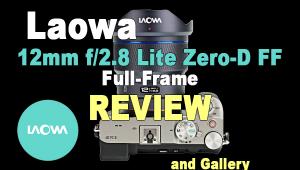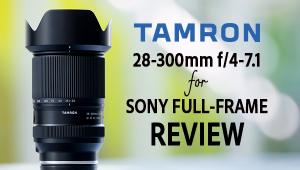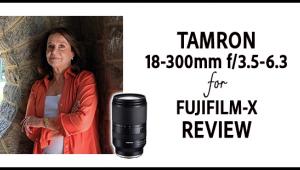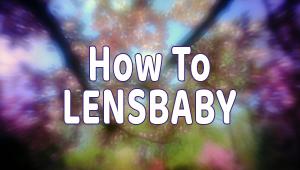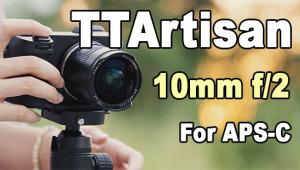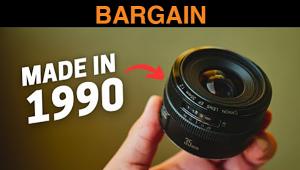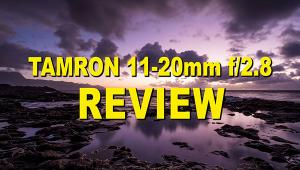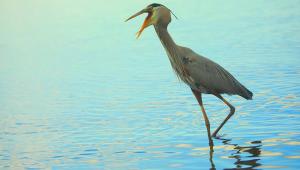Nikon AF-S Nikkor 400mm f/2.8E FL ED VR Lens Review
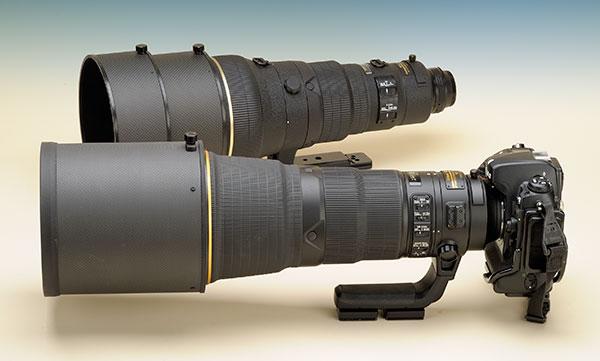
I’ve said it before and I’ll say it again: everyone has their favorite lens and in my pack, you will always find one in the 400mm variety. To wit, I have Nikon’s newer Nikkor 80-400mm f/4.5-5.6 G ED VR, the 200-400mm f/4 G ED VR and the standard-bearer of them all: the prime Nikkor 400mm f/2.8 AF-S lens. Before that, I had a few of the pre-set, manual focus 400’s but when the Nikon F4 was introduced, the game really changed, especially when it came to wildlife or other land moving objects. I was hooked.
Naturally, when digital hit the scene, the Nikon D2X altered the way we all looked at things and at that time, it had an APS-C type sensor that added approximately 1.5X in magnification. Now my 400mm AF-S was a 600mm lens, all without losing a stop of light in the process. I still have that camera and for photographing birds with the 400mm AFS (silent motor) attached, there is crop mode within the camera (2x) which now brought me up to an 800mm lens. Again this is all without a tele-converter. Of course, I lost a bunch of pixels in the process, but what the heck; I had my first, full-blown 800mm lens.
Times change, as do lenses. This particular Nikkor 400mm f/2.8 AF-S “D” type lens is still in my lens battery and I love it. On digital shooting with the FX (full frame) Nikon D3s and D700, it does me good outdoors whether it’s a fox on the run or a train making time eastbound. Mine was built between 1998 and 2001 and according to records, only 2100 were made. This AF-S lens is two generations removed from the first major upgrade in Nikon lenses starting in about 1985 with the AI-S and the AF-I. Next up was the AF-S II, the VR model. And finally, there is Nikon’s most recent introduction in this class: the AF-S Nikkor 400mm f/2.8E FL ED VR ($11,999), which is the subject of this Shutterbug lens review.

Build & Features
When you purchase a 400mm, you gain a bit more wiggle room over the 500mm and a little less than the more common 300mm when it comes to field of view so it’s a good one lens compromise.
One of the biggest design improvements of the AF-S Nikkor 400mm f/2.8E FL ED VR lens over the previous model, is it checks in about two full pounds lighter. For those who use this type of lens day in and day out, this is definitely a godsend. And with the addition of a smaller, DX type camera on your lens, it almost makes it bearable not to mention the increase in focal length. Think about it for a minute: now you have a 600mm f/2.8 lens on your tripod! Isn’t technology great?
Overall, however, the AF-S Nikkor 400mm f/2.8E FL ED VR is still a big lens. In total length, it measures just over 14 inches long and that does not include the seven inch lens hood that fits snugly on the front end. (By the way, if you misplace this hood, a new carbon fiber replacement will cost you a cool $1000!)

The diameter of the AF-S Nikkor 400mm f/2.8E FL ED VR is 6⅛ inches and overall I found the same quality Nikon is famous for applied to this lens. The lens barrel is a matte black, there is a gold ring to signify the ED part of the lens group and all switches, buttons and focusing areas are sealed and water resistant.
Since most telephotos of this genre tend to be heavy in the front end, Nikon has placed two of them with lighter fluorite lenses in this position within the lens. According to the reference material I have, “fluorite lenses are a monocrystal optical material that features excellent light transmission and helps to control and / or diminish the effects of chromatic aberrations in longer focal lengths. As a side benefit, they (as a group) help to keep the overall weight down of the lens.”
Additionally, fluorite lenses have the ability to ward off dust, dirt and even motor oil as seen on a recent Nikon video showing the advantages of these lenses in all applications. Not that I am going to dump motor oil on my lens, but it is a great demonstration of what is here now and what we have to look forward in the future in optics. Inside this lens, you will find 16 elements in 12 groups comprising of two fluorite, two Extra-Low Dispersion (ED) with a protective meniscus up front and Nano coat on one surface to keep annoying reflections at bay.

More Features
An electronic diaphragm has been added to the AF-S Nikkor 400mm f/2.8E FL ED VR to keep exposures more constant when using pro cameras at full frame, high-speed continuous settings with the Silent Wave motor. Since this is a “G” type lens, there is no manual aperture control; the diaphragm has nine blades and for those who must handhold a big lens of this type, Nikon claims a 4-stop improvement over previous models with Vibration Reduction with a normal and sport versus, normal and active modes.
There is multi-coating, internal focusing that keeps the lens the same length no matter the distance from lens to subject and their “CRC” (close range correction) comes into play moving each lens group independently to optimize performance at close distances. The only negative side I found with this lens is that it uses a 40.5mm drop in filter instead of the more common 52mm we have been accustomed to on all Nikon telephotos to date. Maybe not an inconvenience to some, but I for one use their neat rotating polarizing filter and with each going for $220, it is just another item to buy and keep in your pack.
Finishing up with the features of the AF-S Nikkor 400mm f/2.8E FL ED VR, there is a smooth operating tripod collar, four focus lock buttons situated around the lens, a focus limit switch, recall button and five sliders on the left side of the lens that control everything from the VR to the manual focus override that I felt was smooth to the touch and well dampened.

In the Field
In the field, this past winter was a challenge and getting out was somewhat of a hassle, but I did manage to test in the AF-S Nikkor 400mm f/2.8E FL ED VR in a variety of situations especially when the warmer weather came.
I crisscrossed the state looking for subjects and was rewarded with an assortment from Great Meadows, Deerfield and later, Concord, Massachusetts. Down in Amish country, we toured Gettysburg and Lancaster County where I put the lens to good use day after day.
In short, I was more than impressed with its performance, fast autofocus and overall sharpness. Read about my test results in the caption information accompanying the photos in this review.

Conclusion
Testing both lenses on my simple 1951 Air Force target showed some interesting results. For the new AF-S Nikkor 400mm f/2.8E FL ED VR lens, sharpness and contrast were excellent at f/2.8, with not much difference at f/4 or f/5.6, which is a boon to wildlife photographers especially if they use the new Nikon TC-14E III tele-converter.
With my 400mm “G” lens, it was good at f/2.8, excellent at f/4 and good again at f/5.6 with a slight drop in contrast, which is not that much of a difference unless you are shooting smaller, highly defined objects which can be corrected in your software. Would this be enough to sway me to buy the is new AF-S Nikkor 400mm f/2.8E FL ED VR lens over the model I already have? No, not now but possibly in the future when new sensors harbor more pixels and I move into my senior years simply because of the weight factor.
However, for those in the market for a new 400mm lens, the AF-S Nikkor 400mm f/2.8E FL ED VR is optically perfect, in my opinion. The lens, in my testing, also showed an improvement in sharpness and contrast and it would be worthy of an upgrade if your work and cash outlay ($12,000) can handle it.
Check out some more test samples I shot with Nikon's new 400mm champ below.







